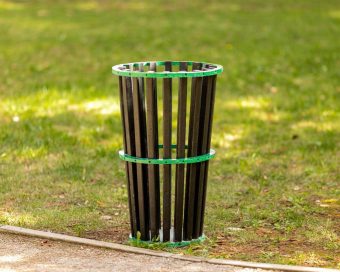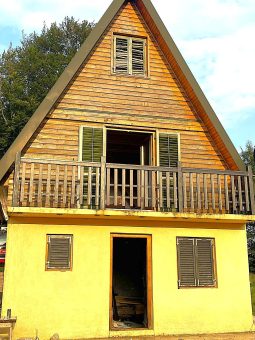Plastic is one of the greatest environmental challenges of our time – it decomposes slowly, often ends up in rivers, lakes, and forests, and harms not only plant and animal life but also human health.
Solving this issue involves reducing plastic use, improving recycling systems, and switching to sustainable alternatives. However, plastic does not have to be waste – with creative ideas and smart technologies, it can be given a new life and a useful function. The Eko-Daska project from Montenegro is a brilliant example of this, as it showcases an innovative way of transforming plastic waste into useful items.

By integrating 3D technology, recycling, and social responsibility into a single process, the creative team at 3D Soba Company produces sustainable outdoor furniture from recycled plastic.
“Eko-Daska was born out of a desire to give plastic a second chance: instead of ending up in nature or landfills, it becomes a lasting, useful product. We make benches, tables, bins, and other elements from plastic waste collected and recycled in Montenegro. The project’s goal is to show that sustainable production is possible even without large systems, and that local waste can become a local resource,” says Aleksandar Mašić from the company.
He emphasizes that the story of “3D soba” stemmed from a personal passion for technology and creation, as well as a market need for affordable, fast, and precise production solutions. They started in a garage with a single printer, and today they are recognized even outside their country.
“Today, we offer 3D printing services, sell 3D printers and filaments, run modelling courses, and develop our own products – with the Eko-Daska project being the most significant,” says Mašić.
The production process for the Eko-Daska was developed in-house and gradually refined. It is specifically designed for recycling local plastic waste and utilizes mechanical processing without the use of chemical additives. The materials used are HDPE and PP plastic, which undergo several stages of transformation to produce a stable, durable, and technically usable product.
The daily production capacity is around 60 meters of planks, with the potential to scale up to 120 meters depending on workload and shift organization. To date, they have delivered several hundred finished products, including benches, tables, chairs, bins, fences, and other elements. The Eko-Daska material itself can be used as a raw material for all types of outdoor furniture.
IN FOCUS:
- The Soundscape of the Sea: The Listening to Its Depth
- Sustainable Energy in Practice – First Advanced EV System in Serbia
- Nuclear energy – Risk or pillar of Energy stability?
Unlike wooden products, these do not rot, do not absorb moisture, require no maintenance, last for years, and are significantly more affordable.
“There is great interest in these products, especially from municipalities and schools, which have so far had to replace wooden furniture frequently. Our products offer a long-term solution, with ecological and social benefits,” Mašić explains.
Regarding raw material supply, he states that they have no difficulties, as there is more than enough local waste available. They have recycled several dozen tons of plastic so far, and source materials in cooperation with Deponija Podgorica and the Lovanja recycling yard.

“People often ask if they can bring us plastic waste themselves. Although we’ve allowed that on a few occasions, we’re not yet systematically open to individual collection, but we plan to develop this in the future,” says Mašić.
He adds that they have not received support from the government, international donors, or funds so far, and that their biggest challenge is balancing production with market recognition. He believes their success has come solely from dedication, quality, and a strong will to create something useful.
Although they currently sell only in Montenegro, there is interest from Bosnia and Herzegovina and Croatia. Customers find them through their website, social media, and word of mouth.
Looking ahead, they aim to expand their capacity, increase staffing, involve more cities and institutions, and develop new products and lines. Speaking to Energy Portal Magazine, they underline that each of their products demonstrates how a circular economy can work in practice and teaches anyone who sees them about the importance of environmental protection and the value of recycling.
Prepared by Jasna Dragojević
The story was published in Energy portal Magazine PURE ENERGY

